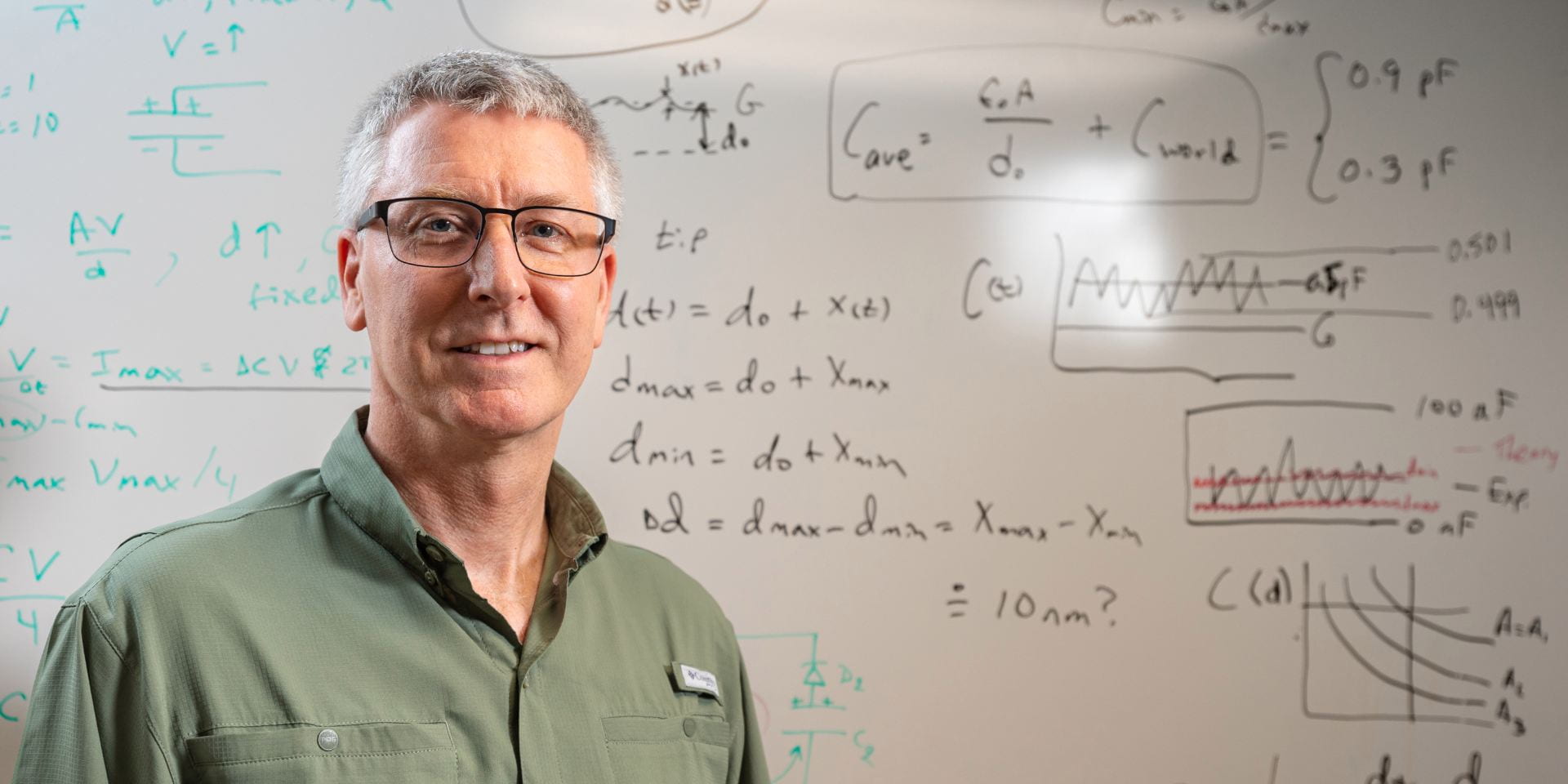Scientists Design Novel Nonlinear Circuit to Harvest Clean Power Using Graphene

Obtaining useful work from random fluctuations in a system at thermal equilibrium has long been considered impossible. In fact, in the 1960s eminent American physicist Richard Feynman effectively shut down further inquiry after he argued in a series of lectures that Brownian motion, or the thermal motion of atoms, cannot perform useful work.
Now, a new study published in Physical Review E titled “Charging capacitors from thermal fluctuations using diodes” has proven that Feynman missed something important.
Three of the paper’s five authors are from the University of Arkansas Department of Physics. According to first author Paul Thibado, their study rigorously proves that thermal fluctuations of freestanding graphene, when connected to a circuit with diodes having nonlinear resistance and storage capacitors, does produce useful work by charging the storage capacitors.
The authors found that when the storage capacitors have an initial charge of zero, the circuit draws power from the thermal environment to charge them. The team then showed that the system satisfies both the first and second laws of thermodynamics throughout the charging process. They also found that larger storage capacitors yield more stored charge and that a smaller graphene capacitance provides both a higher initial rate of charging and a longer time to discharge. These characteristics are important because they allow time to disconnect the storage capacitors from the energy harvesting circuit before the net charge is lost. (Refer to the animation of circuit.)
This latest publication builds on two of the group’s previous studies. The first was published in a 2016 Physical Review Letters article entitled “Anomalous Dynamical Behavior of Freestanding Graphene Membranes.” In that study, Thibado and his co-authors identified the unique vibrational properties of graphene and its potential for energy harvesting. The second was published in a 2020 Physical Review E article entitled “Fluctuation-induced current from freestanding graphene,” in which they discuss a circuit using graphene that can supply clean, limitless power for small devices or sensors.
This latest study progresses even further by establishing mathematically the design of a circuit capable of gathering energy from the heat of the earth and storing it in capacitors for later use.
“Theoretically, this was what we set out to prove,” Thibado explained. “There are well-known sources of energy, such as kinetic, solar, ambient radiation, acoustic, and thermal gradients. Now there is also nonlinear thermal power. Usually, people imagine that thermal power requires a temperature gradient. That is, of course, an important source of practical power, but what we found is a new source of power that has never existed before. And this new power does not require two different temperatures because it exists at a single temperature.”
In addition to Thibado, co-authors include Pradeep Kumar, John Neu, Surendra Singh, and Luis Bonilla. Kumar and Singh are also physics professors with the University of Arkansas, Neu with the University of California, Berkeley, and Bonilla with Universidad Carlos III de Madrid.
A DECADE OF INQUIRY
The study represents the solution to a problem Thibado has been studying for well over a decade, when he and Kumar first tracked the dynamic movement of ripples in freestanding graphene at the atomic level. Discovered in 2004, graphene is a one-atom-thick sheet of graphite. The duo observed that freestanding graphene has a rippled structure, with each ripple flipping up and down in response to the ambient temperature.
“The thinner something is, the more flexible it is,” Thibado said. “And at only one atom thick, there is nothing more flexible. It’s like a trampoline, constantly moving up and down. If you want to stop it from moving, you have to cool it down to 20 Kelvin.”
His current efforts in the development of this technology are focused on building a device he calls a Graphene Energy Harvester (or GEH). GEH uses a negatively charged sheet of graphene suspended between two metal electrodes. When the graphene flips up, it induces a positive charge in the top electrode. When it flips down, it positively charges the bottom electrode, creating an alternating current. With diodes wired in opposition, allowing the current to flow both ways, separate paths are provided through the circuit, producing a pulsing DC current that performs work on a load resistor.
COMMERCIAL APPLICATIONS
NTS Innovations, a company specializing in nanotechnology, owns the exclusive license to develop GEH into commercial products. Because GEH circuits are so small, mere nanometers in size, they are ideal for mass duplication on silicon chips. When multiple GEH circuits are embedded on a chip in arrays, more power can be produced. They can also operate in many environments, making them particularly attractive for wireless sensors in locations where changing batteries is inconvenient or expensive, such as an underground pipe system or interior aircraft cable ducts.
Donald Meyer, founder and CEO of NTS Innovations, said of Thibado’s latest effort: “Paul’s research reinforces our conviction that we are on the right path with Graphene Energy Harvesting. We appreciate our partnership with the University of Arkansas in bringing this technology to market.”
Ryan McCoy, NTS Innovations’ vice president of sales and marketing, added, “There is broad demand across the electronics industry to shrink form factors and decrease dependency on batteries and wired power. We believe Graphene Energy Harvesting will have a profound impact on both.”
Of the long road to making his latest theoretical breakthrough, Thibado said, “There was always this question out there: ‘If our graphene device is in a really quiet, really dark environment, would it harvest any energy or not?’ The conventional answer to that is no, as it apparently defies the laws of physics. But the physics had never been looked at carefully. I think people were afraid of the topic a bit because of Feynman. So, everybody just said, ‘I’m not touching that.’ But the question just kept demanding our attention. Honestly, its solution was only found through the perseverance and diverse approaches of our unique team.”





You must be logged in to post a comment.